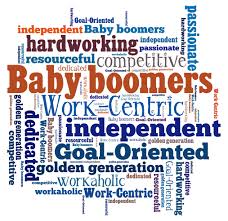 Remember those predictions that Baby Boomers would redefine retirement and become the first generation to continue working well past 65? Turns out that’s not what’s happening any more. A Gallup Poll finds that by age 68, only about a third of boomers are still in the workforce, including just 16 percent who are working full time.
Remember those predictions that Baby Boomers would redefine retirement and become the first generation to continue working well past 65? Turns out that’s not what’s happening any more. A Gallup Poll finds that by age 68, only about a third of boomers are still in the workforce, including just 16 percent who are working full time.
Since Baby Boomers currently hold nearly a third of all jobs and more than half of leadership positions, their exit is likely to create a significant brain drain.
Wise employers will seek ways to handle the needed knowledge transferand experience gap now. Start simple by keeping your senior workers on board for even 12 to 18 additional months can give you time to develop mechanisms to transfer their knowledge to Generation X and Millennial workers.
If yours is a small or midsize firm, retaining Boomers is one business challenge where you have an advantage. Without the institutional challenges facing larger firms, you can be dynamic and innovative with your employment brand, says Kip Michael Kelly, Director of Marketing & Public Programs at the University of North Carolina’s Kenan-Flagler Business School.
Start your Boomer knowledge retention and replacement program with a look at your risks, says Kelly, so you know where your organization’s pain points will occur:
- How many people are close to retirement or thinking about retirement?
- What management roles do they fill?
- What skills and abilities will you have to replace when they leave?
- What industry and client relationships will your company lose?
- What institutional knowledge do your Boomers have?
Keep Your Boomers on Board
Keeping Baby Boomers engaged and on the job is a tactic that many companies are employing. A study from LIMRA Secure Retirement Institute found 92 percent of employers are taking steps to help their employees work longer, says Deborah Dupont, LIMRA’s associate managing director of retirement plans research.
Flexibility is a key component of their retention strategies. Two-thirds of the surveyed firms implemented flexible work hours. Federal government agencies have been offering a phased retirement option to employees who wish to work part time. They draw part-time salary, partial retirement benefits and must spend 20 percent of their work time mentoring coworkers.
Not quite half (42 percent) of the organizations surveyed by LIMRA had flexible workplaces, allowing employees to work from home, remotely or from more than one location. That’s a tactic that can work even for retail organizations. Nearly two-thirds of the companies in the LIMRA survey said they expected higher benefits costs while half of survey respondents plan to absorb higher health costs.
CVS Caremark, for example, hires snowbird employees who choose work in the company’s Florida stores in the winter months and in northern stores during the summer.
Making the Workplace Senior Friendly
Another way to slow the retirements of your Baby Boomer workers is to resolve the issues that commonly lead these workers to retire – even when they want to continue working:
- 60 percent leave due to health problems or what is sometimes referred to as acquired disabilities. Can you make your workplace more accommodating?
- 22 percent leave to care for a family member or spouse. Do you offer eldercare services including emergency elder care? Flextime or part-time work options?
- 10 percent retire due to a lack of transferable skills. Does your organization offer employee training?
These workplace adaptations can actually lead to process improvements. When BMW designed an assembly line based on input from older workers, the line showed a 7 percent productivity increase in a single year. Follow BMW’s lead by setting up a forum where your oldest workers can share ideas for workplace improvements.
Consider Partnerships
Over the course of their careers, Baby Boomers have been shown to be very entrepreneurial, according to the Ewing Marion Kaufmann Foundation’s 2015 State of Entrepreneurship report.
“Older entrepreneurs don’t usually start companies out of retirement or unemployment -- they are more likely to do so from a job,” the report finds. “So rising labor force participation among Boomers, combined with their existing propensity to start companies, could mean a boost to rates of business creation in the future.”
To capitalize on this trend, you could discuss post-retirement entrepreneurship in your pre-retirement talks with employees and during exit interviews. Are there opportunities to continue working with a retiring Baby Boomer via a partnership or joint operating agreement?
Get Millennials and Gen X Ready
One of the best methods to capture your Boomer’s knowledge and experience is with a mentor program, says Courtney Templin, president, JB Training Solutions, Chicago and author of Manager 3.0: A Millennial's Guide to Rewriting the Rules of Management. “Millennials are eager to learn and they love mentors and coaches,” she says.
“Part-time consulting and coaching can be another option for transferring knowledge,” adds Templin. “Be sure you make clear guidelines and structure for the program so the new leaders can wholeheartedly step into the role.”
Other ways to share knowledge include setting up multi-generational work teams and asking employees to share their thoughts about company culture, policies, procedures and tools via blogs or wikis.
© 2016 — Monster Worldwide, Inc. All Rights Reserved. You may not copy, reproduce or distribute this article without the prior written permission of Monster Worldwide.


